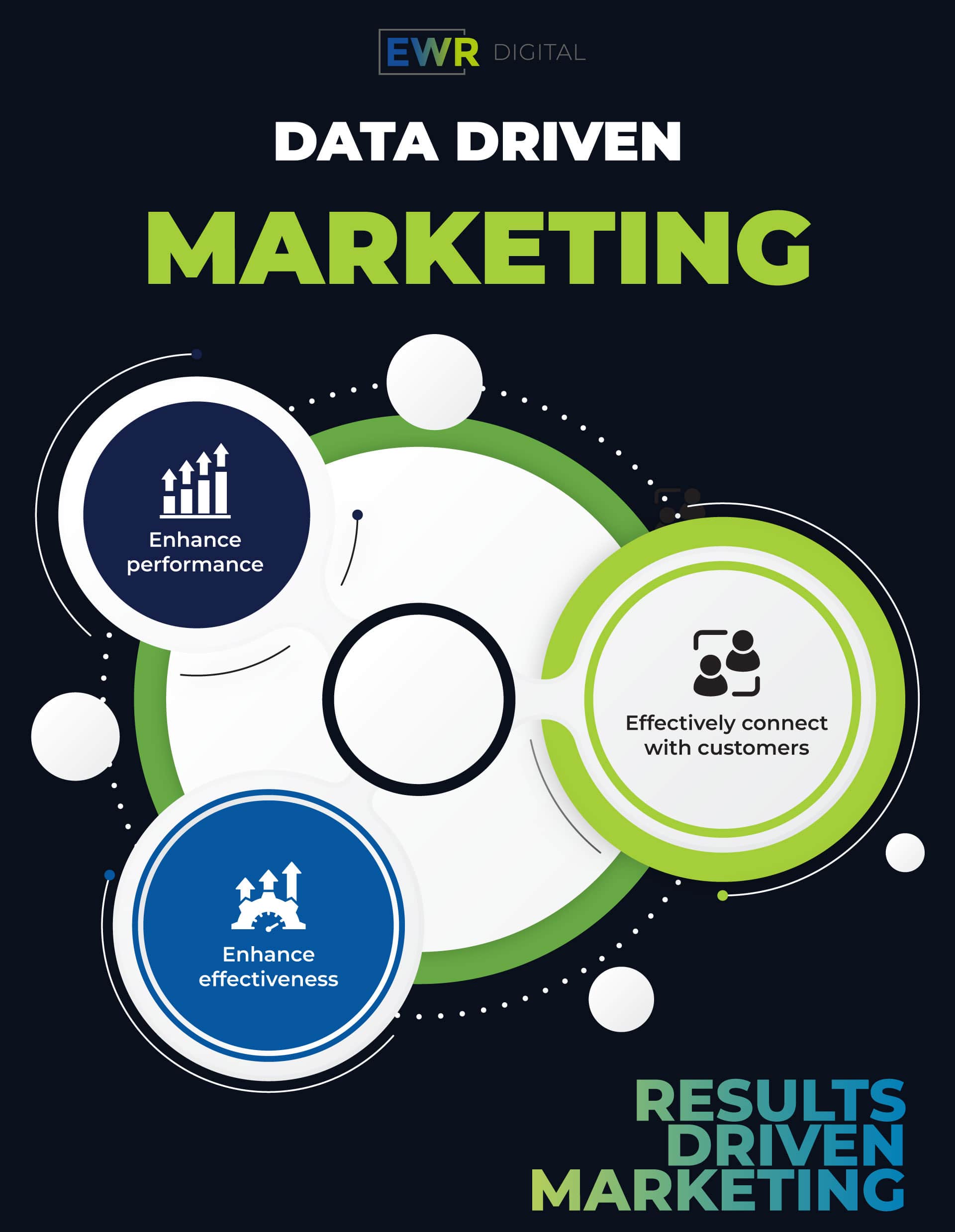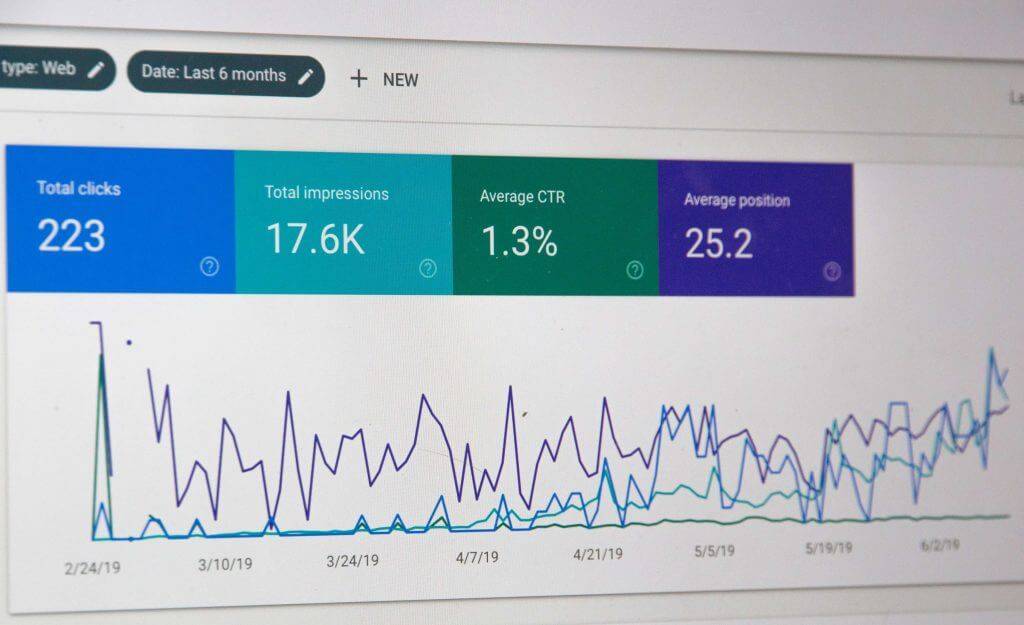
A digital marketing agency thinks of data as the lifeblood of its strategies. Without enough or the right kind of data, you’ll more than likely find that you won’t get the results you’re looking for. Data isn’t just a fancy buzzword. When you need to know just how well your campaign is performing, explore why data-driven marketing is vital.
There are plenty of ways you can both incorporate and optimize a data-driven marketing strategy for your business. Not sure where to start? Don’t worry; we’ve got you covered!
Let’s take a look at everything you need to know.
What Is Data-Driven Marketing?

Before we move forward, it’s important to understand this concept in its entirety. As the name suggests, this term refers to marketing strategies that use researched data as the foundation for campaigns. The term ‘data’ in this instance refers to relevant information about your target audience that can be substantiated through research facts.
To further elaborate, data-driven marketing is a practice that incorporates customer information to target one’s audience as accurately as possible. While the method may seem like the obvious choice for marketing, plenty of companies base their marketing efforts on pure assumption.
For example, it’s not uncommon for an individual in charge of a small business’ marketing efforts to assume stereotypes if their audience is comprised of mostly males. In that case, they may assume their political views or preferences. While this assumption will be broad that it can’t inherently be incorrect, it’s a poor way to characterize a company’s entire audience.
Similarly, many marketers run sub-optimal campaigns due to only basing their evidence on past or recent performance. While this may or may not allow the company to hit decent numbers, foregoing research is often not the best option for serious companies about maximizing sales or conversions.
What Is The Main Goal of This Method?
At first, it may seem like the primary goal of data-driven marketing is to increase sales. While this is a significant factor, it’s not the overarching theme behind it. Instead, it would be best if you focused on recognizing and then anticipating your customers’ needs.
Let’s take a look at a brief scenario:
David owns a small online store that supplies athletic apparel. His most popular products by far are his company’s running shoes.
Since David places a large emphasis on his shoes’ aesthetic, he assumes that these products sell so well because of how they look. He doesn’t spend much time looking at his sales analytics and instead concludes that these shoes must be popular with younger athletes due to the trendy/flashy colors and styles he incorporates.
Over time, his sales begin to dwindle with no explanation. Initially, he blames himself for his latest release and assumes the colorways he presented weren’t up to his audience’s standards. Frustrated, he doubles down and develops his next releases, this time purchasing increased online ad space to help make up for his lost numbers.
Much to David’s dismay, the second release performed worse than the previous one. Not only were his sales notably low, but his engagement was worse than ever before. Thinking he’d done everything he could, he becomes discouraged through the debt he’s accumulated and assumes it’s time for his business to come to an end.
David failed to realize that his primary buyers were men in their 30’s who were overweight.As an unintentional byproduct of David’s shoe design, his running shoes were notably comfortable for those who normally found jogging or running painful. Therefore, individuals seeking to increase their level of physical activity would turn to David’s brand for increased comfort at an affordable price.
When David mass-targeted a younger audience, his shoes failed to perform well due to several factors:
- Younger audiences typically purchase shoes made by brands with plenty of social statuses (Nike, Adidas, etc.).
- The above-average level of comfort his shoes provided was both unadvertised and irrelevant to a younger audience.
- He completely neglected his actual demographic (men in their 30’s) in his messaging while advertising.
His brand’s unraveling stemmed from his negligence to research his audience. He based his marketing methods on both past results and assumptions, preventing him from discovering both his actual target demographic and the major selling point of his company’s shoes.
How Can Data-Driven Marketing Be Incorporated?
While the concept behind this type of marketing is easy enough to understand, it can be difficult at first to grasp how it can be incorporated into your company’s existing marketing strategies. To take advantage of this practice effectively, you’ll need to keep three elements in mind:
- The message behind your advertising (often characterized as the ad’s creative content).
- The media is used to deliver your message.
- The audience data you’re using as the foundation for both your chosen message and media.
Let’s briefly explore each one and its impact.
The Message
To make the most conversions possible (whether it be a purchase or simply signing up for an email newsletter), you’ll need to present a message that resonates with your audience. This step is crucial, as delivering the wrong message can give the impression that your business can’t relate to its customers.
In contrast, showcasing a message that your audience can understand and relate to will help develop a bond between your business and its customers. Over time, this will lead to increased loyalty that translates into higher sales, online engagement, and even word-of-mouth advertising.
The Media
As you research your audience, you’ll be able to discern what type of platform is best to target them. It’s important to get as specific as possible here, even to the point where you focus on one particular social media platform.
Many times, the platform your audience uses most will surprise you once you discover it through research. A certain demographic of college students may be most receptive to email marketing, or an audience comprised of 50-year-olds may be best reached through Instagram.
To put it simply, you won’t definitively know until you look into it on your own, so don’t forego the opportunity to research this element of your audience’s behavior.
The Data Itself
The ‘data’ that’s referred to here isn’t anything special. It’s often mostly basic information about your audience with a few ‘X’ factors here and there. In general, you’ll want to consider characteristics like:
- Geographic location (and time zone)
- Age
- Level of education
- Occupation/annual income
- Hobbies/general interests
- Ethnic background
- Primary language
The aforementioned ‘X’ factors will vary from group to group and could be anything from purchasing habits to where they conventionally spend their weekends when they leave their home.
How Can I Accurately Research My Audience?
To accurately procure this data, you’ll need to have a plan when it comes to research. Fortunately, though, the most effective methods don’t require much effort on your part. This is especially true if your company has already provided products/services in the past.
Below are a few of the most noteworthy.
Look at Your Current Analytics
Your company website and social media profiles are a goldmine when it comes to researching your customers. Your analytics will provide you plenty of crucial info about your audience, including their age range, gender, time zone, etc. While it’s not likely that you can stop your research here (and you shouldn’t), you may notice that a large bulk of your analytics stems from a specific demographic.
For example, you may find that your fashion blog’s main traffic comes from France despite being written in English and based in Boston, Massachusetts. From here, you can tailor your marketing strategies to better capitalize on a specific demographic that’s already interested in your brand.
Look at Your Customers
In addition to researching who’s viewing your brand, you also need to look into who’s making purchases. You may find yourself in a situation where you’re targeting a particular demographic, but another demographic sees your content organically and makes purchases from your company’s site. Shifting your marketing focus toward the demographic already making transactions will boost your numbers even further. Be sure to analyze your sales reports and find out info about who’s most likely to buy a product/service that you provide.
Check Popular Keywords
Using a free tool like Google’s Keyword Planner, you’re able to research what type of keywords a particular demographic is searching for and how relevant those keywords are to your business. Once you know a bit more about who your demographic is, you can plug this information in to discover the browsing habits of a typical member of your audience.
After you learn what they’re searching for, you’ll know how to bring traffic to your site’s content. Then, you’ll be able to anticipate their problems and needs and provide them a solution once they get there.
What Other Benefits Does This Type of Marketing Provide?

While the above attributes of data-driven marketing are often enough to develop a reliable marketing strategy, there’s a handful of extra factors to consider that can also benefit your company.
Listed below are a few worth considering.
Separating Fact From Opinion
It can be difficult for some business owners to acknowledge that their previous notions about their audience were incorrect. Even if their assumptions are partially correct, some entrepreneurs remain stuck in their beliefs. While researching customer data, they’ll find exactly who’s interacting with their brand. From there, they can discard incorrect assumptions about their audience and fine-tune their strategies to accommodate their core demographic better.
Better Customer Satisfaction + Stronger Relationships
The better you understand your audience and their needs, the better customer service you’ll be able to provide. This is especially true when dealing with elderly or international clients who may need a bit of extra care. Increased client satisfaction leads to repeat business and a stronger bond between you and your customer.
It’s a good practice to encourage customers to leave an online review that briefly details their interaction with your brand. Not only will this give you honest insight into what you’re doing right and where you need to improve, but it will also help establish your brand’s online presence.
As the reviews accumulate, you’ll become more of an authority in your industry and even boost your site’s search engine ranking.
Highly Personalized Marketing
People tend to respond best to marketing when it speaks to them. For example, understanding your audience’s sense of humor is a great way to establish this type of connection. As your level of marketing personalization increases, you’ll find that your engagement and sales likely will, too.
Developing An Effective Data-Driven Marketing Strategy Can Seem Difficult
But it doesn’t have to be. With the above information in mind, you’ll be well on your way to creating a data-driven marketing strategy that works best for your business.
Want to learn more about how we can help? Feel free to get in touch with us today to see what we can do.

